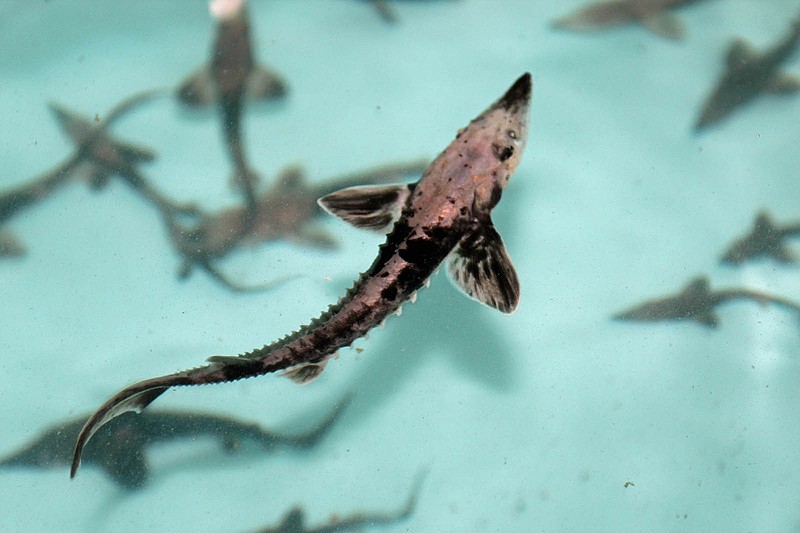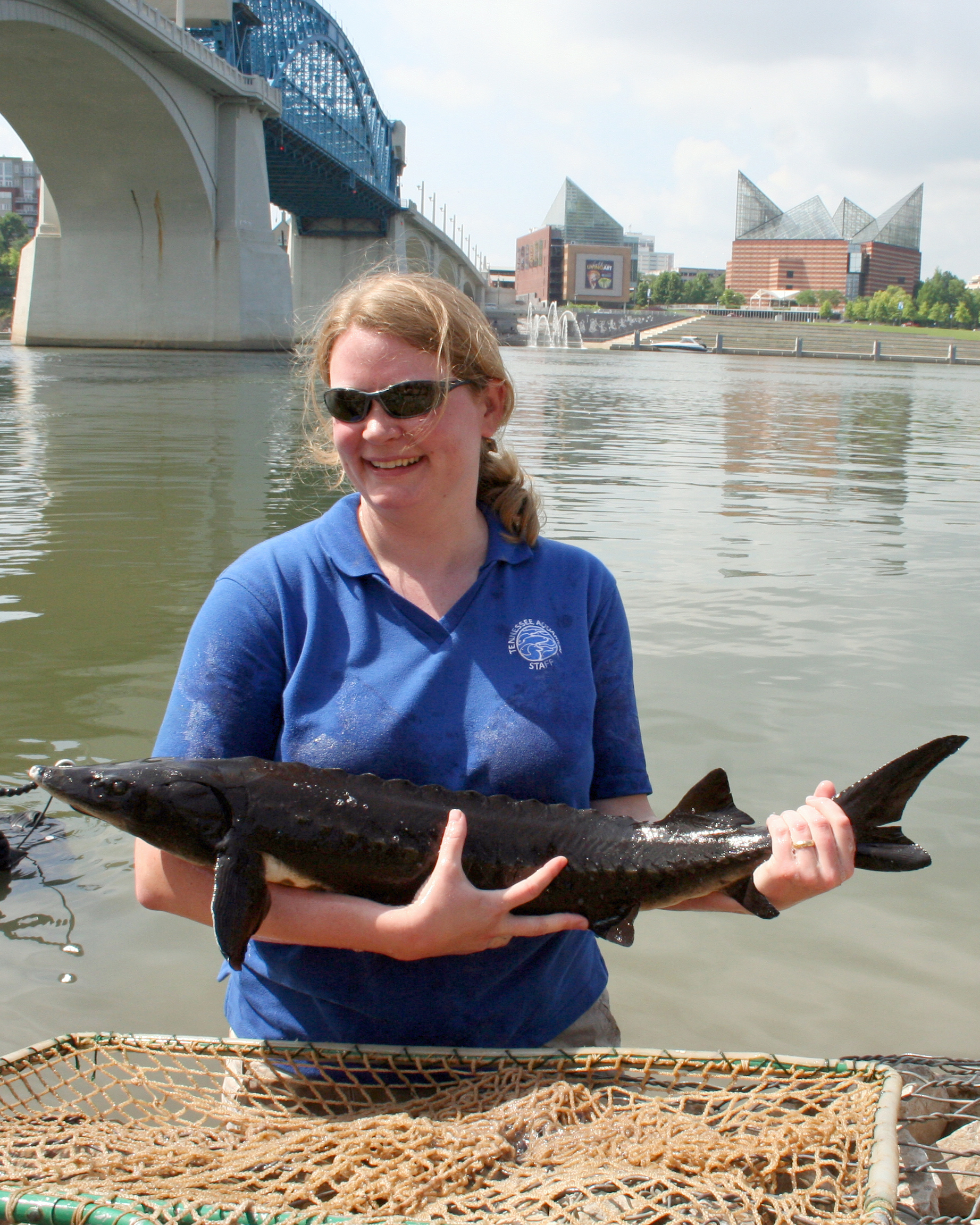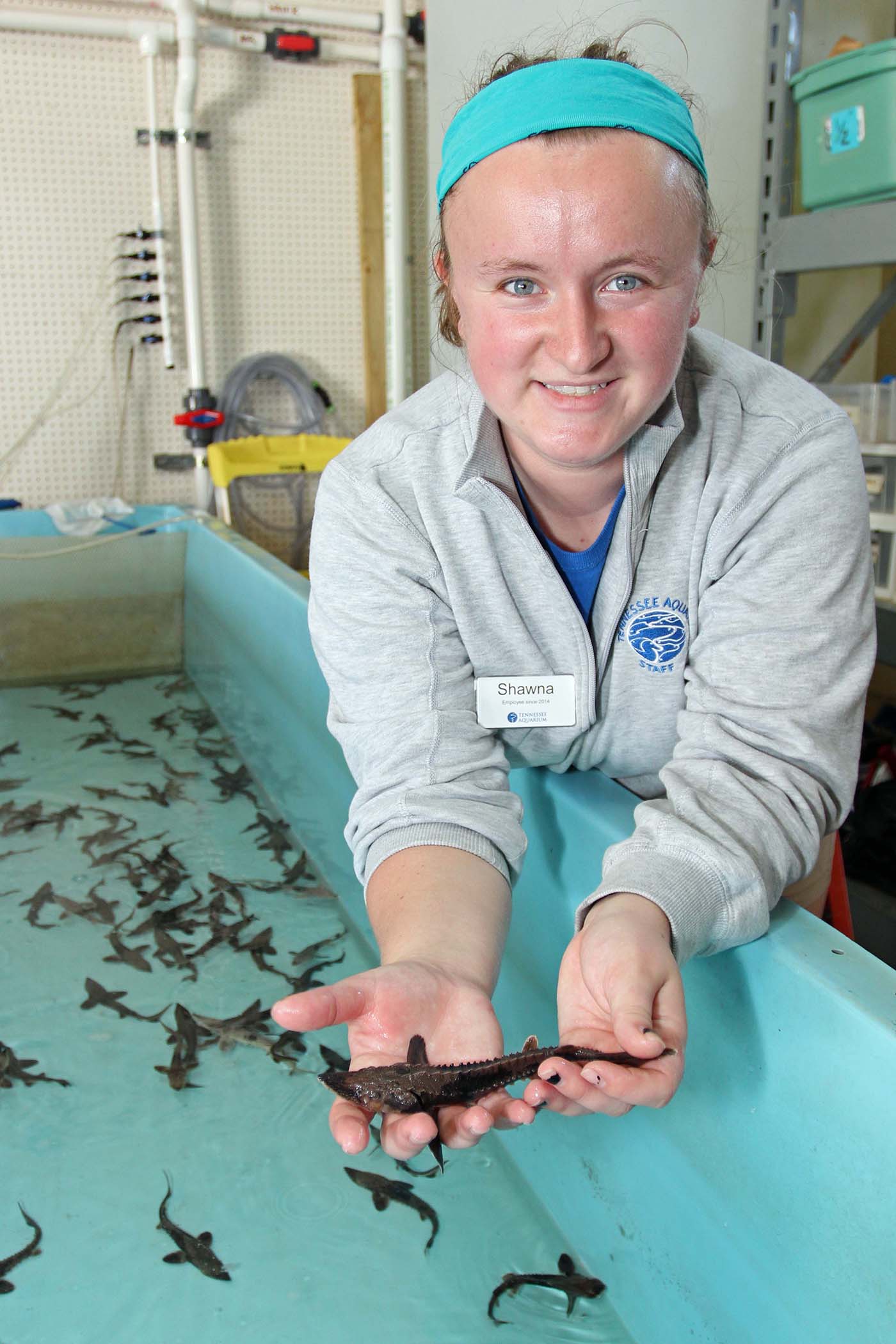With its whiskered, prehistoric face and long, notched body, the lake sturgeon is a sight to behold - though you may be hard-pressed to find one these days. Native to the Great Lakes and Mississippi River watersheds, it is a threatened species. Last month, the national Center for Biological Diversity petitioned for the fish's protection under the Endangered Species Act.
But while most of the sturgeon's range is seeing a drastic decline in population, locally, numbers are climbing thanks to the efforts of the Tennessee Aquarium, TVA and others. In honor of the 20th anniversary of the Saving the Sturgeon Program, here are 20 numbers associated with the primeval fish.
1998: Lake Sturgeon Working Group is established.
2000: First reintroduction of sturgeon into the Tennessee River.
180,000: Lake sturgeon released into the upper Tennessee River system through the program.
40,000: Lake sturgeon released into the Cumberland River in Tennessee.
6/18: When the next group of baby sturgeon will arrive at the Tennessee Aquarium Conservation Institute, ready for reintroduction to the watershed in October or November.
6 inches: Minimum length of each sturgeon released, the size thought to be optimal for survival.
1 month: Time eggs take to hatch. The eggs are a main reason why the species disappeared. Along with water quality and loss of habitat, overfishing led to the species' decline. The eggs are prized as caviar.
99 percent: Species' decline over the past century or so. In 1961, the last lake sturgeon was caught in Tennessee.
6: Remaining Great Lakes populations with more than 1,000 adult fish. At the end of the 1800s, 15 million inhabited the Great Lakes - so many that during spawning season, it is said they could capsize a boat. They are the largest (and oldest ) native species in the Great Lakes.
9 feet, 276 pounds: Size a lake sturgeon can reach.
4 million: Pounds of sturgeon processed in Michigan in 1880 - the average amount brought in each year between 1879 and 1900 by the Great Lakes commercial sturgeon fishery. Once thought a nuisance and stacked and burned on the shore, by this time other uses had been found for lake sturgeon. They were burned as fuel for steamboats, their swim bladders used to produce beer and wine, and their meat and eggs served as a delicacy.
23: States in the lake sturgeon's range: Alabama, Arkansas, Georgia, Illinois, Indiana, Iowa, Kansas, Kentucky, Michigan, Missouri, Minnesota, Mississippi, Nebraska, New York, North Carolina, North Dakota, Ohio, Pennsylvania, South Dakota, Tennessee, Vermont, West Virginia and Wisconsin.
18: States where the fish is imperiled. It carries a designation of endangered in Tennessee.
152 years: How long a lake sturgeon can live.
15-20 years: Age at which males start spawning. This delayed reproduction has also contributed to the fish's decline.
4 years: Average time between spawning.
10-20: Percent of adult lake sturgeon within a population that are sexually active and spawn during a given season.
55-64 Fahrenheit: Preferred temperature for spawning, making global warming another threat to the lake sturgeon's survival.
13-30 feet: Depth where lake sturgeon are usually found, though some have been found up to 141 feet deep.
0: Teeth a lake sturgeon has, instead relying on its barbels and rubbery lips to locate and vacuum up prey it stirs from sediment at the bottom of large lakes and rivers. "Sturgeon" means "the stirrer" in several European languages.


